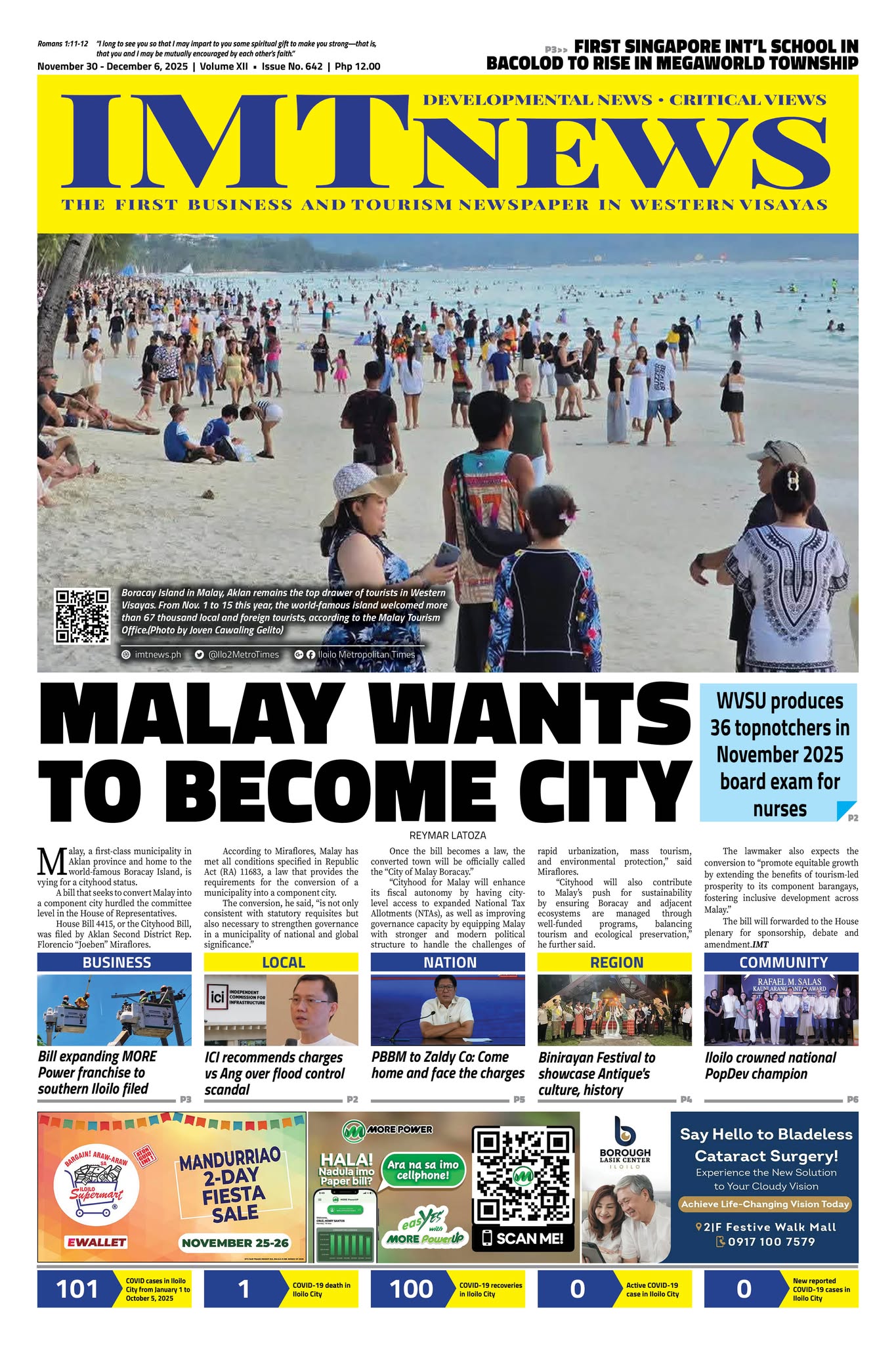The clack of the typewriter still echoes in my memory—my report on LASER taking shape under the steady guide of my Grade 7 Science Teacher, Ma’am Zenaida Espino. I pieced it together from volumes of encyclopedias, journals, textbooks, indices, and clippings in the dusty UI High library, each keystroke a blend of curiosity, effort, and quiet pride. Today, students type a prompt into an app and receive a polished essay in seconds. What once took three weekends now takes three minutes. As STEP 2025 opens at Ateneo de Davao University this week the contrast could not be starker—and yet, the crossroads clearer. Generation X, born before the internet but young enough to embrace it (1965-1980), now faces its most defining pivot: to either stay rooted in tradition or reinvent ourselves with it.
We were raised during the slow disruptions of the 1980s and 1990s—when scientific calculators replaced slide rules, when desktop computers came with floppy disks, and when the internet arrived like a timid visitor rather than a conquering force. We are the generation that manually calculated vector and projectile motion using the trigonometric tables and the square root of a number and graph of conic sections using groundwood papers, then watched with wonder as programmable Casios cut our computation time in multiple folds.
I remember my mother waiting weeks for a scheduled international call through PLDT just to speak with her sister in Kansas—connecting through Manila and across time zones, only to cry over static-filled voices in a cramped booth in Lapaz for a few precious minutes. That kind of connection took more than coins—it took long waiting lists, exact timing, and hearts that could hold back tears. Years later, I would take a cramped ship from Iloilo to Manila just to reserve Future Shock and The Third Wave, only to be gently told, “Wala pa, sir. Try next month.” That struggle taught us not just content, but character. Now, all of it—calls, books, answers—can be done with a quick search, anywhere, anytime, without even breaking a sweat.
It is exactly that blend of patience and perspective that makes reinvention not only possible for Gen X—but powerful. Unlike younger generations born into seamless digital environments, we carry the memory of what came before. We did not just download change; we lived through the installation and read the manuals. And that long view is a gift. At today’s STEP plenary, Dr. Hernando Salapare introduced France’s iSTEM model—a system that fuses science and technology with design and ethics. It made me think of our own quiet builders—teachers, coders, researchers—who shaped the foundations of this AI era even before it had a name.
Among them is Dr. Bobby Gerardo, my college friend from our youth activism days, now RASUC VI Chairperson. He called on us to “inspire action so we can collectively shape strategies for sustainable, impactful educational reform.” His words echo the Gen X spirit: unflashy but focused, grounded yet responsive. And that same spirit was echoed by ADDU President Fr. Karel San Juan, who urged us to “equip ourselves with innovative insights, practical tools, and meaningful connections to shape the future of learning.” These words coming from GenXers themselves are not platitudes. They are invitations—to transform, not just conform.
Across today’s STEP hybrid sessions—on generative AI, tech-enabled instruction, gamified learning—I felt that quiet Gen X presence. Not the loudest in the room, but often the ones synthesizing. Intel Senior Trainer Dr. Eddelyn Gupetio’s reminder nailed it: “Computers are not magic. Teachers are.” That hit home. We remember the DOS-based thesis files that vanished without backups, the midnight redraws of ink-smudged engineering plates, and the agonizing patience of early tech. We also remember what it taught us: that learning is never just about access—it is about discernment, discipline, and depth.
And it turns out, many of the architects of AI’s present and future are Gen Xers, too. Jeff Dean, born in 1968, co-founded Google Brain and developed the frameworks powering today’s large language models. Fei-Fei Li (b. 1976, ImageNet, Google Cloud), Sebastian Thrun (b. 1967, Google X, Udacity), Demis Hassabis (b. 1976, DeepMind, AlphaFold), Daphne Koller (b. 1969, Coursera)—many of them stand at the same age intersection as we do, crafting a digital world they once imagined. Elon Musk (b. 1971)—yes, that Elon Musk, quirks, quacks, memes, nuts, and all—nonetheless helped bring AI safety into mainstream dialogue, elevating conversations around ethics, regulation, and long-term risk. Even in the Philippines, Gen X scholars like Dr. Prospero Naval Jr. (UP Diliman) and Dr. Ma. Mercedes Rodrigo (Ateneo) are using AI for education analytics grounded in empathy. These are not abstract names. They are proof that our generation is not watching history unfold—we are still writing it.
That is why it is not just important—but urgent—for Gen Xers to choose reinvention. To not remain frozen in analog pride or nostalgic comfort, but to lean into the disruption with the clarity only we can bring. We know what it is like to wait in line for one LaserDisc in the school library, and now find ourselves frustrated when a chatbot stalls for five seconds. But maybe that contrast is what makes us uniquely ready. We have lived the long road. Now we must help pave the next one.
At STEP 2025’s breakout sessions, I saw fellow educators wielding new tools with the same care we once gave to acetate sheets and chalk. That is the Gen X way: not fast for speed’s sake, but deliberate for depth’s sake. We are not here to replicate what students can now generate with a click. We are here to ask: does it make them better thinkers? Kinder people? More curious learners?
Fellow Gen Xer Christine Valencia, the STEP 2025 conference chair, captured it well when she described the space as a moment where teachers arrive with open minds and big hopes. Gen X brings both—with a foot in two worlds. We know that embracing AI is not about becoming like the young. It is about remembering what they no longer had to learn the hard way—and choosing to bring that memory into their fast world with meaning.
So no, Gen X is not obsolete. We still matter—but only if we choose to. In many ways, we are lucky. We did not just see the digital shift—we lived it. We typed on WordStar, dialed on a rotary phone, and flipped through encyclopedias and library catalogs before Wikipedia and Google. That slow-to-sudden change taught us to value tools without being dazzled by them. We bring context to innovation because we remember life before it. And we know how to move through uncertainty—we have done it many times. The challenge now is not to compete with the young, but to keep evolving with purpose. This revolution needs both memory and momentum. Gen X carries both.
In the age of AI, what becomes rare is not intelligence—but wisdom. Not access—but purpose. And perhaps the greatest blessing of being Gen X now is having the chance to still choose—to unlearn, relearn, and reimagine. To translate the past into guidance, not baggage. To become, once again, students of change.
When the world rushes forward without blinking, it helps to have one foot rooted in remembering. Generation X is not the endpoint. We are the bridge. And we still have something to teach—not because we know it all, but because we remember why it matters.
Doc H fondly describes himself as a “student of and for life” who, like many others, aspires to a life-giving and why-driven world grounded in social justice and the pursuit of happiness. His views do not necessarily reflect those of the institutions he is employed or connected with.







